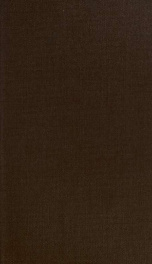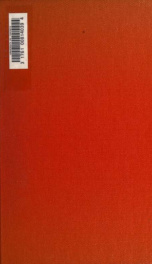Cacops (Amphibia : Labyrinthodontia) from the Fort Sill Locality, Lower Permian of Oklahoma Fieldiana, Geology, Vol.37, No.3

The armored dissorophid (Superfamily Dissorophoidea) labyrinthodont amphibian Cacops aspidephorus is unusual in having a large otic notch closed posteriorly by the tabular. Cacops was previously known only from the "Cacops Bone Bed," Lower Permian of Texas. Poor preservation makes this material difficult to study. Excellently preserved, though disarticulated, Cacops material has now been recovered from the Fort Sill fissure fills, which are probably very close in age to the "Cacops Bone Bed." Identification of the Fort Sill material as Cacops is based on palatines (primarily), armor scutes, and quadrates; the latter are here described for the first time from Fort Sill. The Cacops quadrate resembles that of other dissorophoids in having a posterodorsal process, which is unusual in the marked anterior expansion of its dorsal end. Comparison with other dissorophoids having a closed otic notch shows that Cacops is not unique in this anterior expansion of the process. Orientation of the process can apparently be used to distinguish trematopsids with a slit-like, closed (by the tabular) otic notch, from dissorophids. At least one such trematopsid occurs at Fort Sill, and resembles Cacops in anterior expansion of the process. -- Ontogeny of Cacops is discussed, and it is concluded that: 1. Closure of the otic notch by the tabular occured [sic] early in the ontogeny; 2. Exclusion of the laterally-exposed portion of the palatine from the orbital rim, a feature unique to Cacops among known dissorophids, also developed early in ontogeny; 3. Growth-stages of Cacops available at Fort Sill were all probably post-metamorphic. All were dentitionally normal labyrinthodonts, with no trace of the "lissamphibian" dental features found in the related Doleserpeton. This may be due, however, to the fact that Doleserpeton is represented by less-mature specimens than is Cacops Includes bibliographical references (p. 73) The armored dissorophid (Superfamily Dissorophoidea) labyrinthodont amphibian Cacops aspidephorus is unusual in having a large otic notch closed posteriorly by the tabular. Cacops was previously known only from the "Cacops Bone Bed," Lower Permian of Texas. Poor preservation makes this material difficult to study. Excellently preserved, though disarticulated, Cacops material has now been recovered from the Fort Sill fissure fills, which are probably very close in age to the "Cacops Bone Bed." Identification of the Fort Sill material as Cacops is based on palatines (primarily), armor scutes, and quadrates; the latter are here described for the first time from Fort Sill. The Cacops quadrate resembles that of other dissorophoids in having a posterodorsal process, which is unusual in the marked anterior expansion of its dorsal end. Comparison with other dissorophoids having a closed otic notch shows that Cacops is not unique in this anterior expansion of the process. Orientation of the process can apparently be used to distinguish trematopsids with a slit-like, closed (by the tabular) otic notch, from dissorophids. At least one such trematopsid occurs at Fort Sill, and resembles Cacops in anterior expansion of the process. -- Ontogeny of Cacops is discussed, and it is concluded that: 1. Closure of the otic notch by the tabular occured [sic] early in the ontogeny; 2. Exclusion of the laterally-exposed portion of the palatine from the orbital rim, a feature unique to Cacops among known dissorophids, also developed early in ontogeny; 3. Growth-stages of Cacops available at Fort Sill were all probably post-metamorphic. All were dentitionally normal labyrinthodonts, with no trace of the "lissamphibian" dental features found in the related Doleserpeton. This may be due, however, to the fact that Doleserpeton is represented by less-mature specimens than is Cacops Fieldiana series has been published as Geological Series by Field Columbian Museum (1895-1909) and Field Museum of Natural History (1909-1943), and as Fieldiana: Geology by Chicago Natural History Museum (1945-1966) and Field Museum of Natural History (1966-)
Info about the book
Author:
Series:
Unknown
ASIN:
B007F5XMXK
Rating:
3.5/5 (3)Your rating:
0/5
Languge:
English
Users who have this book
Users who want this book
What readers are saying
What do you think? Write your own comment on this book!
write a commentif you like Cacops (Amphibia : Labyrinthodontia) from the Fort Sill Locality, Lower Permian of Oklahoma Fieldiana, Geology, Vol.37, No.3 try:
Other books by this author
Do you want to exchange books? It’s EASY!
Get registered and find other users who want to give their favourite books to good hands!









